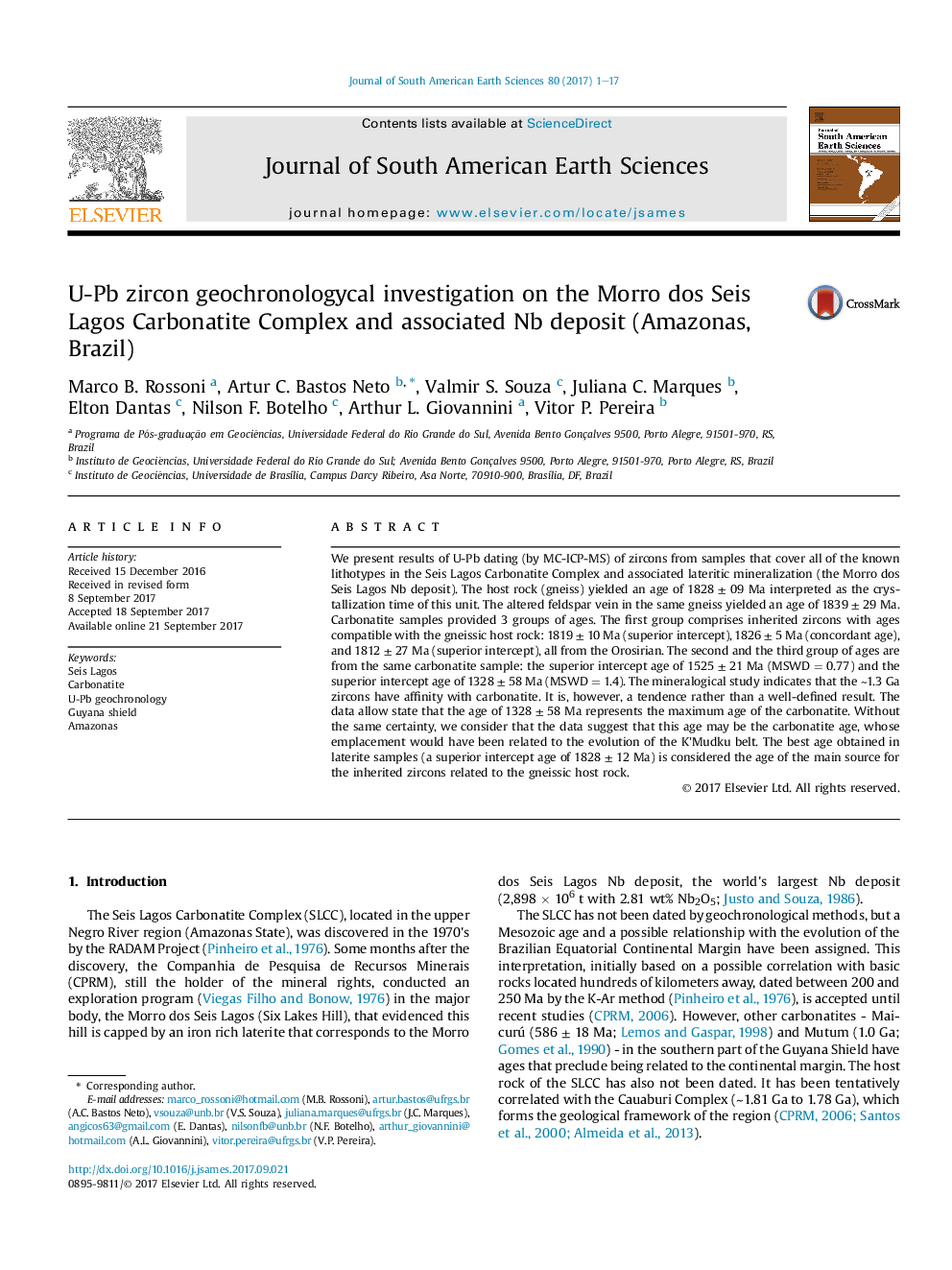| Article ID | Journal | Published Year | Pages | File Type |
|---|---|---|---|---|
| 5780331 | Journal of South American Earth Sciences | 2017 | 17 Pages |
Abstract
We present results of U-Pb dating (by MC-ICP-MS) of zircons from samples that cover all of the known lithotypes in the Seis Lagos Carbonatite Complex and associated lateritic mineralization (the Morro dos Seis Lagos Nb deposit). The host rock (gneiss) yielded an age of 1828 ± 09 Ma interpreted as the crystallization time of this unit. The altered feldspar vein in the same gneiss yielded an age of 1839 ± 29 Ma. Carbonatite samples provided 3 groups of ages. The first group comprises inherited zircons with ages compatible with the gneissic host rock: 1819 ± 10 Ma (superior intercept), 1826 ± 5 Ma (concordant age), and 1812 ± 27 Ma (superior intercept), all from the Orosirian. The second and the third group of ages are from the same carbonatite sample: the superior intercept age of 1525 ± 21 Ma (MSWD = 0.77) and the superior intercept age of 1328 ± 58 Ma (MSWD = 1.4). The mineralogical study indicates that the â¼1.3 Ga zircons have affinity with carbonatite. It is, however, a tendence rather than a well-defined result. The data allow state that the age of 1328 ± 58 Ma represents the maximum age of the carbonatite. Without the same certainty, we consider that the data suggest that this age may be the carbonatite age, whose emplacement would have been related to the evolution of the K'Mudku belt. The best age obtained in laterite samples (a superior intercept age of 1828 ± 12 Ma) is considered the age of the main source for the inherited zircons related to the gneissic host rock.
Related Topics
Physical Sciences and Engineering
Earth and Planetary Sciences
Earth and Planetary Sciences (General)
Authors
Marco B. Rossoni, Artur C. Bastos Neto, Valmir S. Souza, Juliana C. Marques, Elton Dantas, Nilson F. Botelho, Arthur L. Giovannini, Vitor P. Pereira,
